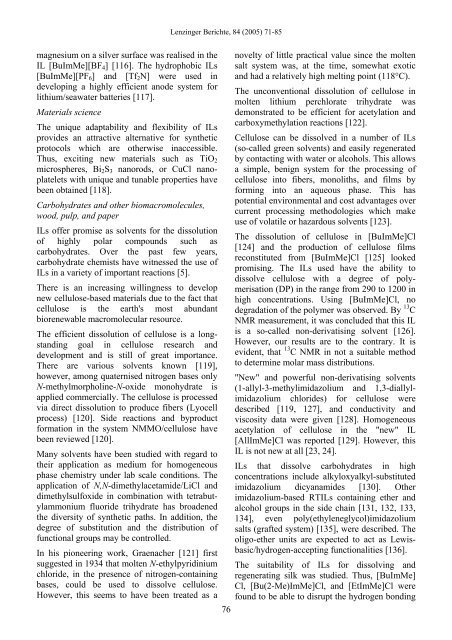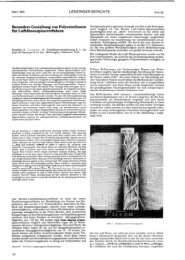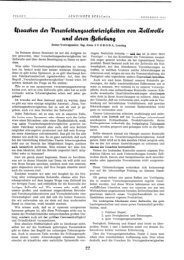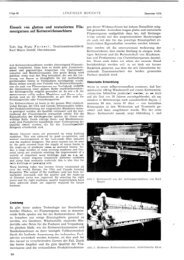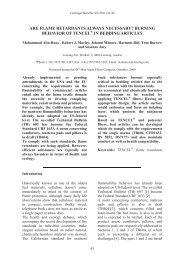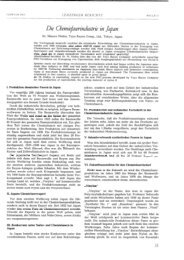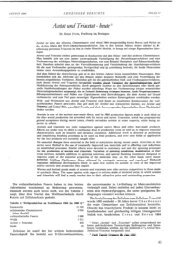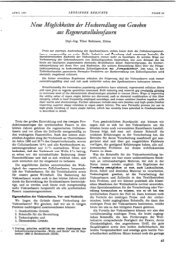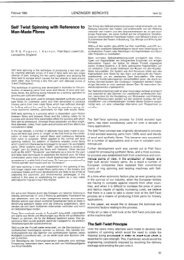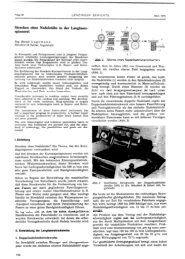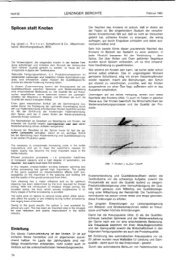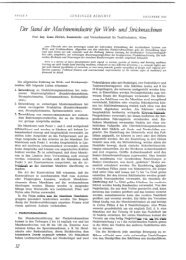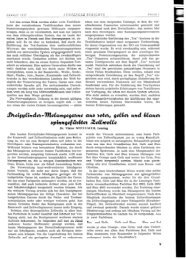Ionic liquid: current developments, potential and ... - Lenzing
Ionic liquid: current developments, potential and ... - Lenzing
Ionic liquid: current developments, potential and ... - Lenzing
Create successful ePaper yourself
Turn your PDF publications into a flip-book with our unique Google optimized e-Paper software.
magnesium on a silver surface was realised in the<br />
IL [BuImMe][BF4] [116]. The hydrophobic ILs<br />
[BuImMe][PF6] <strong>and</strong> [Tf2N] were used in<br />
developing a highly efficient anode system for<br />
lithium/seawater batteries [117].<br />
Materials science<br />
The unique adaptability <strong>and</strong> flexibility of ILs<br />
provides an attractive alternative for synthetic<br />
protocols which are otherwise inaccessible.<br />
Thus, exciting new materials such as TiO2<br />
microspheres, Bi2S3 nanorods, or CuCl nanoplatelets<br />
with unique <strong>and</strong> tunable properties have<br />
been obtained [118].<br />
Carbohydrates <strong>and</strong> other biomacromolecules,<br />
wood, pulp, <strong>and</strong> paper<br />
ILs offer promise as solvents for the dissolution<br />
of highly polar compounds such as<br />
carbohydrates. Over the past few years,<br />
carbohydrate chemists have witnessed the use of<br />
ILs in a variety of important reactions [5].<br />
There is an increasing willingness to develop<br />
new cellulose-based materials due to the fact that<br />
cellulose is the earth's most abundant<br />
biorenewable macromolecular resource.<br />
The efficient dissolution of cellulose is a longst<strong>and</strong>ing<br />
goal in cellulose research <strong>and</strong><br />
development <strong>and</strong> is still of great importance.<br />
There are various solvents known [119],<br />
however, among quaternised nitrogen bases only<br />
N-methylmorpholine-N-oxide monohydrate is<br />
applied commercially. The cellulose is processed<br />
via direct dissolution to produce fibers (Lyocell<br />
process) [120]. Side reactions <strong>and</strong> byproduct<br />
formation in the system NMMO/cellulose have<br />
been reviewed [120].<br />
Many solvents have been studied with regard to<br />
their application as medium for homogeneous<br />
phase chemistry under lab scale conditions. The<br />
application of N,N-dimethylacetamide/LiCl <strong>and</strong><br />
dimethylsulfoxide in combination with tetrabutylammonium<br />
fluoride trihydrate has broadened<br />
the diversity of synthetic paths. In addition, the<br />
degree of substitution <strong>and</strong> the distribution of<br />
functional groups may be controlled.<br />
In his pioneering work, Graenacher [121] first<br />
suggested in 1934 that molten N-ethylpyridinium<br />
chloride, in the presence of nitrogen-containing<br />
bases, could be used to dissolve cellulose.<br />
However, this seems to have been treated as a<br />
<strong>Lenzing</strong>er Berichte, 84 (2005) 71-85<br />
76<br />
novelty of little practical value since the molten<br />
salt system was, at the time, somewhat exotic<br />
<strong>and</strong> had a relatively high melting point (118°C).<br />
The unconventional dissolution of cellulose in<br />
molten lithium perchlorate trihydrate was<br />
demonstrated to be efficient for acetylation <strong>and</strong><br />
carboxymethylation reactions [122].<br />
Cellulose can be dissolved in a number of ILs<br />
(so-called green solvents) <strong>and</strong> easily regenerated<br />
by contacting with water or alcohols. This allows<br />
a simple, benign system for the processing of<br />
cellulose into fibers, monoliths, <strong>and</strong> films by<br />
forming into an aqueous phase. This has<br />
<strong>potential</strong> environmental <strong>and</strong> cost advantages over<br />
<strong>current</strong> processing methodologies which make<br />
use of volatile or hazardous solvents [123].<br />
The dissolution of cellulose in [BuImMe]Cl<br />
[124] <strong>and</strong> the production of cellulose films<br />
reconstituted from [BuImMe]Cl [125] looked<br />
promising. The ILs used have the ability to<br />
dissolve cellulose with a degree of polymerisation<br />
(DP) in the range from 290 to 1200 in<br />
high concentrations. Using [BuImMe]Cl, no<br />
degradation of the polymer was observed. By 13 C<br />
NMR measurement, it was concluded that this IL<br />
is a so-called non-derivatising solvent [126].<br />
However, our results are to the contrary. It is<br />
evident, that 13 C NMR in not a suitable method<br />
to determine molar mass distributions.<br />
"New" <strong>and</strong> powerful non-derivatising solvents<br />
(1-allyl-3-methylimidazolium <strong>and</strong> 1,3-diallylimidazolium<br />
chlorides) for cellulose were<br />
described [119, 127], <strong>and</strong> conductivity <strong>and</strong><br />
viscosity data were given [128]. Homogeneous<br />
acetylation of cellulose in the "new" IL<br />
[AllImMe]Cl was reported [129]. However, this<br />
IL is not new at all [23, 24].<br />
ILs that dissolve carbohydrates in high<br />
concentrations include alkyloxyalkyl-substituted<br />
imidazolium dicyanamides [130]. Other<br />
imidazolium-based RTILs containing ether <strong>and</strong><br />
alcohol groups in the side chain [131, 132, 133,<br />
134], even poly(ethyleneglycol)imidazolium<br />
salts (grafted system) [135], were described. The<br />
oligo-ether units are expected to act as Lewisbasic/hydrogen-accepting<br />
functionalities [136].<br />
The suitability of ILs for dissolving <strong>and</strong><br />
regenerating silk was studied. Thus, [BuImMe]<br />
Cl, [Bu(2-Me)ImMe]Cl, <strong>and</strong> [EtImMe]Cl were<br />
found to be able to disrupt the hydrogen bonding


